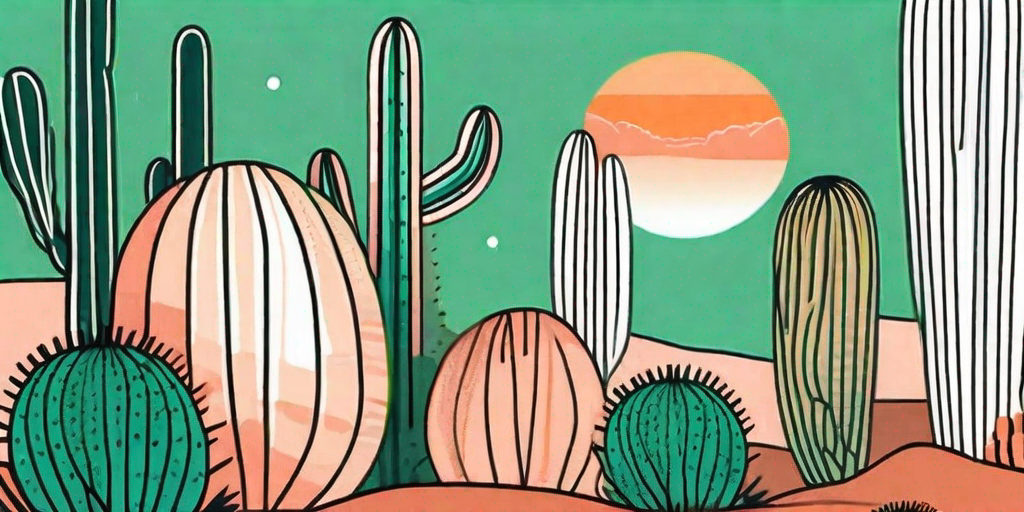
Welcome to the intriguing world of the Obesa cactus. This prickly yet plump plant is a marvel of nature, full of surprises and oddities that make it a fascinating subject for both botany enthusiasts and casual observers. So, buckle up and get ready for a wild ride into the world of this peculiar plant.
A Prickly Introduction to the Obesa Cactus
The Obesa cactus, scientifically known as Euphorbia obesa, is a unique species of plant native to South Africa. It's known for its distinctive spherical shape and lack of spines, a feature that sets it apart from the stereotypical image of a cactus.
Despite its name, the Obesa cactus is not a true cactus. It belongs to the Euphorbia family, a group of plants known for their milky sap. This sap is a defense mechanism against herbivores, but it's also a potential irritant to humans. So, while the Obesa cactus might look cute and harmless, it's not a plant to be trifled with!
The Life of an Obesa Cactus
Obesa cacti lead a simple yet fascinating life. They thrive in arid conditions, making the most of the little water they receive. Their spherical shape is an adaptation to their harsh environment, allowing them to store water for extended periods of dryness.
These plants are slow growers, taking their sweet time to reach maturity. But once they do, they can live for many years, providing a constant source of beauty and interest.
Reproduction
Obesa cacti have a unique method of reproduction. They are dioecious, meaning that individual plants are either male or female. This is a rare trait among plants, adding another layer of intrigue to this already fascinating species.
The male Obesa cactus produces pollen, while the female produces ovules. When the pollen from a male plant reaches a female plant, fertilization occurs, and seeds are produced. These seeds are then dispersed, often by birds, leading to the growth of new Obesa cacti.
Growth
Obesa cacti are slow-growing plants. It can take up to eight years for a plant to reach maturity. But don't let this deter you from growing one. The wait is well worth it, as a mature Obesa cactus is a sight to behold.
These plants grow in a spherical shape, reaching a diameter of up to 20 centimeters. They have a smooth, green surface marked with horizontal lines. The absence of spines gives them a unique, almost cartoonish appearance.
Caring for an Obesa Cactus
Despite their exotic origins, Obesa cacti are relatively easy to care for. They are hardy plants that can withstand a range of conditions, making them a great choice for novice gardeners.
However, there are a few key points to keep in mind when caring for an Obesa cactus. Let's take a look at them.
Lighting
Obesa cacti love sunlight. They thrive in bright, indirect light, but they can also tolerate direct sunlight. However, too much direct sunlight can cause their skin to turn a reddish color, a sign of sunburn.
So, while these plants love to bask in the sun, it's important to provide them with some shade during the hottest part of the day. This will help to prevent sunburn and keep your Obesa cactus looking its best.
Watering
As desert plants, Obesa cacti are adapted to survive with little water. They have a large root system that allows them to absorb and store water efficiently. This means that they don't need to be watered frequently.
However, these plants do appreciate a good drink during the growing season. The key is to water them thoroughly, then allow the soil to dry out completely before watering again. This mimics the natural rainfall patterns in their native habitat and helps to prevent overwatering, which can lead to root rot.
Obesa Cactus FAQs
Now that we've covered the basics of the Obesa cactus, let's tackle some frequently asked questions about this intriguing plant.
Is the Obesa cactus poisonous?
Yes, the Obesa cactus is poisonous. It produces a milky sap that is an irritant to the skin and eyes. If ingested, it can cause nausea, vomiting, and diarrhea. So, while it's a beautiful plant, it's best to keep it out of reach of children and pets.
Can I grow an Obesa cactus from seed?
Yes, you can grow an Obesa cactus from seed. However, keep in mind that these plants are slow growers. It can take several years for a seedling to reach maturity. But if you're patient and willing to put in the effort, growing an Obesa cactus from seed can be a rewarding experience.
How often should I repot my Obesa cactus?
Obesa cacti are slow growers, so they don't need to be repotted frequently. Generally, you should repot your Obesa cactus every 2-3 years, or whenever it outgrows its current pot. When repotting, be sure to use a well-draining soil mix to prevent waterlogging.
Conclusion
So there you have it, a comprehensive guide to the prickly yet plump world of the Obesa cactus. This fascinating plant is a testament to the wonders of nature, with its unique adaptations and intriguing life cycle.
Whether you're a seasoned botanist or a casual plant lover, the Obesa cactus is sure to captivate your interest. So why not add one to your collection? You might just find yourself falling in love with this quirky plant.















